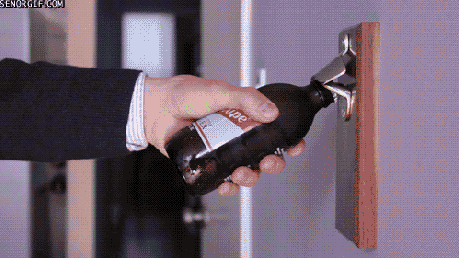Over the weekend I drove my motorcycle to Grumpy Troll Brewpub in Mt. Horeb, Wisconsin and had a swig of a few of their beers. Their Scottish red ale surprised me by blowing my taste buds up. I shouldn’t have been surprised, though, because that beer style is known for its richness in taste.
In lieu of Grumpy Troll’s brewmaster being in Portland, obviously unable to chat with me about what’s happening at Grumpy Troll, I figured now is a great opportunity to go over some beer styles using Grumpy Troll’s brews as examples.
I recall the first few Ambers, Scottish Ales and IPAs I drank. At the time, having yet to develop my adventurous beer palate, I kept trying the same styled beer expecting different results. I had four IPAs before I realized what made an IPA an IPA.
Save yourself from making my same mistakes by getting familiar with the different beer styles.
Wee Curly Scottish Ale (Scottish Ale)
As foretold Scottish Ales, also known as a Scotch Ale or Wee Heavy, tend to pack a punch. In the 19th century Edinburgh, breweries and beer enthusiasts believed these brews to be too strong for the title of a pale ale, and “strong pale ale” didn’t have a good enough ring to it. A long boil in the kettle leads to the Scottish Ale’s deep copper color and rich mouthfeel. Expect little to no appearance of hops in the taste; it’s nearly all malt.
Liberty Pole Pale Ale (American Pale Ale)
I’ve found pale ales to be the style with the most variance in character, mainly because of the varietal use of local, as opposed to regional, ingredients. The brewer’s goal of any APA is to find a balance of malt and hops, and one brewer’s view of balance is often different than another’s.
I do have to hand it to the Brits – they have a more collective standard for a pale ale than Americans who focus on a “clean” look and often experiment with more hops. As common as an APA may seem, it may not be the best beer for a beginner.
Maggie Imperial IPA (Imperial IPA)
If you’ve taken a swig of a beer and tasted bitterness or a not-so-refreshing pine flavor, you’ve likely just had an IPA. One word describes an IPA: Hops.
What I’m amazed by are Imperial IPAs or Double IPAs. They are stronger yet sweeter versions of an IPA. While the alcohol content is high (typically eight percent or higher ABV), you’re not likely to down many of these within an hour, nor should you try. Double IPAs are the Rocky Mountains of hops. Not for the faint hearted.
Grumpy Troll Maibock (Maibock/Heller Bock)
The Maibock style of beer is quite popular in Wisconsin, regularly promoted around spring as it was originally brewed in Bavaria to symbolize the extreme continental seasonal climate change.
Maibocks tend to be light in color, giving an appearance of a halfway mark between a wheat beer and an amber. Hops are also present in this brew, but more floral than bitter.
Fun fact: You’ll often see a goat on maibock labels due to the accent of Bavarians calling the beer “ein Bock,” which is translated as a billy goat.
Trailside Wheat (Hefeweizen)
A Hefeweizen is a south German style of wheat beer that uses yeast to produce banana and clove flavors. Hefeweizen’s are fun because you can always expect a slight tart fruity edge, but never really know what fruit it will represent.
Hefeweizens are an unfiltered brew with a mysteriously cloudy appearance. I top the glass of my Hefeweizen with a lemon or orange garnish. While some say doing so ruins the flavor, I believe it accentuates it because you smell the garnish, and it sets your tastebuds up to experience the fruity edge of the brew.


